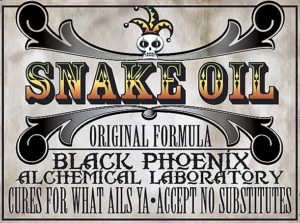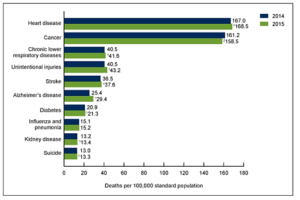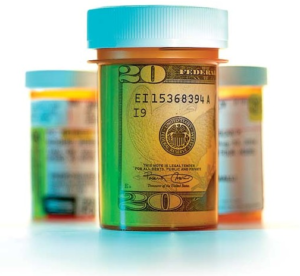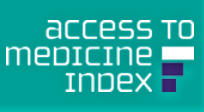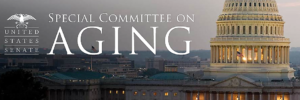- The FDA to study whether people can recognize misleading drug ads (mmm-online.com)
The FDA has proposed two studies that would seek to determine how well consumers and healthcare providers can identify deceptive prescription drug claims in branded marketing materials...The first study would investigate the ability of consumers and HCPs to detect false or misleading promotions when showed two mock pharmaceutical websites, one site oriented toward providers and a separate one for consumers...The second study would focus on examining whether the participants can identify the difference between implicit and explicit deceptive claims...is the claim overtly wrong? Or is it misleading because it understates certain information?...and whether those claims affect their attitudes and intentions toward the promoted drug...The notice comes as the agency grapples with an industry pushing for the sharing of truthful, non-misleading information with more stakeholders outside of a drug's approved label
- 5 Findings From the Recent US Mortality Data Report (ajmc.com)The CDC’s National Center for Health Statistics released a report (Mortality in the United States, 2015) with new data on the 2015 US mortality rates. Here are 5 findings to take away from the report...the National Center for Health Statistics...released a data brief containing information on US death rates, life expectancy, and infant mortality rates in 2015. Here are 5 findings to take away from the report.
- In a troubling sign, life expectancy fell.
- The age-adjusted death rate has increased as well.
- The leading causes of death remain the same…
- … But rates of those causes have changed.
- Infant mortality has risen, but not significantly.
- Drug Prices, Senior Programs May Deliver Blow to State Budgets (realclearhealth.com)
Higher prescription drug prices, combined with changes to Medicare and Social Security, could deal a $1.6 billion blow to state budgets next year by forcing them to ratchet up spending on Medicaid…Without congressional intervention, most state Medicaid agencies will have to come up with tens of millions of dollars to cover the bill...The new costs could prompt states to tighten eligibility requirements or cut benefits...The new costs come at a time when many states already are experiencing budget strains...About $1.2 billion of the $1.6 billion projected Medicaid hike for the states is the result of higher prices for prescription drugs in Medicare, the federal health plan for the elderly and disabled people. Medicaid and therefore the states are affected by a group of “dual eligible beneficiaries,” who receive both Medicare and Medicaid benefits because of their low income...
- Which drug makers do a good job getting poor patients access to their medicines? (statnews.com)
The pharmaceutical industry is regularly chastised for failing to do enough to ensure that people in low and middle-income countries have access to its medicines. Yet the real picture is actually more nuanced, according to a newly released report that finds some — but not all — drug makers are making headway...Some companies...are partnering to develop needed medicines. Others are pledging to waive or abandon patent rights and granting licenses so that generic versions of their drugs become available. At the same time, the report finds that much more can be done…“...progress is slower than many of us would like,”...executive director of the Access to Medicine Foundation…The foundation...compiled an index...Here are some key findings: GlaxoSmithKline led the index for the fifth time and was followed by Johnson & Johnson and Novartis, while Astellas had the poorest showing...the number of companies using equitable pricing strategies increased from 16 in 2012, to 18 in 2014, to 19 in 2016. Ischemic heart disease replaced HIV/AIDS as the disease with the most products with equitable pricing...As for drugs being developed...420 R&D projects that address specific needs of people in low and middle-income countries, up from 93 in 2014. The pipeline focuses heavily on five diseases —lower respiratory infections, diabetes, malaria, viral hepatitis and HIV/AIDS — that cause relatively large burdens and either have large commercial markets or are high priorities.
- Collins, McCaskill Release Committee Report of Bipartisan Drug Pricing Investigation (aging.senate.gov)Senator Susan Collins...Chairman... of the Senate Aging Committee, released a report on drug pricing...titled, “Sudden Price Spikes in Off-Patent Prescription Drugs: The Monopoly Business Model that Harms Patients, Taxpayers, and the U.S. Health Care System.” The comprehensive report details the findings stemming from the Committee’s bipartisan investigation into abrupt and dramatic price increases for prescription drugs whose patents expired long ago. Through close examination of the monopoly business model used by four pharmaceutical companies to exploit market failures, the report examines how companies acquired decades-old, off-patent, and previously affordable drugs and then raised the prices suddenly and astronomically at the expense of patients. The report provides case studies of the four companies; explores the influence of investors; assesses the impacts of price hikes on patients, payers, providers, hospitals, and the government; and discusses potential policy responses.
- Enact the Increasing Competition in Pharmaceuticals Act...to incentivize competition to address regulatory uncertainty, small market size, and other factors that serve as limitations to generic entry;
- Encourage generic competition by ensuring the right to obtain samples and simplifying Risk Evaluation and Mitigation Strategies;
- Consider allowing highly targeted, temporary prescription drug importation to provide prompt price relief for major price increases in off-patent drugs;
- Take steps to prevent the misuse of patient assistance programs and copay coupons;
- Reinvigorate the Federal Trade Commission to take greater enforcement action on drug company mergers, operations, and drug market dynamics; and
- Improve transparency in the health care system.
- U.S. Doctors Still Over-Prescribing Drugs: Survey (realclearhealth.com)
Despite evidence that certain drugs aren't always necessary, doctors are still prescribing these treatments, a new survey of doctors reveals...Antibiotics are by far the drugs most frequently used in situations where they'll provide no value for patients. The survey found that more than a quarter of doctors surveyed (27 percent) said that antibiotics are often administered to patients when the drugs will do no good...antibiotics are prescribed to treat upper respiratory infections even though these are most often caused by viruses unaffected by the medication…Other treatments that doctors use frequently despite their questionable value include aggressive treatments for terminally ill patients (9 percent), drugs prescribed for chronic pain (7 percent), and dietary supplements such fish oil and multivitamins (5 percent), the survey revealed...Physicians also might be practicing defensive medicine to ward off potential malpractice suits, or trying to meet clinical performance measures that call for blanket treatments that must be applied to all patients...
- 5 Most Expensive Medicare Drugs — and Which Companies Are Getting Rich from Them (fool.com)
Medicare spends billions of dollars each year on prescription drugs. That's not surprising. What might be surprising, though, is how much the federal healthcare program spends per patient on some of these drugs. Here are the five most expensive drugs covered by Medicare on a per-patient basis -- and which companies are making a lot of money from them.
- H.P. Acthar (corticotropin)…Medicare spent $162,371 per patient in 2015 on a drug that's been around since the 1950s -- H.P. Acthar. The drug, which is made from an extract from the pituitary glands of pigs, is used to treat several indications, including multiple sclerosis relapse and infantile spasms.
- Remodulin (treprostinil)…which treats pulmonary arterial hypertension, ranked as the second most expensive drug covered by Medicare. The average cost per patient for Remodulin in 2015 was $144,070. Unlike most of the high-cost drugs reimbursed by Medicare, the price for Remodulin didn't increase last year.
- Tyvaso (treprostinil inj)…Another pulmonary arterial hypertension treatment, Tyvaso, came in right behind Remodulin on Medicare's list of costly drugs. Medicare spent $107,489 per patient for Tyvaso in 2015.
- Provenge (sipuleucel-T)…ranks as the most expensive cancer treatment (on a per-patient basis) for Medicare. The federal program spent $95,290 per patient for the advanced prostate cancer immunotherapy last year.
- Harvoni (ledipasvir and sofosbuvir)…Medicare spent $92,847 per patient last year for Harvoni. That landed the hepatitis C drug at No. 5 on the list of most expensive drugs covered by Medicare. However, Harvoni is at the very top of the list when it comes to total spending. Medicare spent over $7 billion in 2015 for Harvoni, by far the most of any drug covered by the program.
These five most expensive drugs covered by Medicare have one surprising thing in common: None of them had big price increases last year...Another thing that most of these drugs have in common is that they play a significant role in the fortunes of the companies that sell them.
- Many health news stories lack independent sources (reuters.com)
News stories about medical research rarely include objective comments from experts who weren't involved in the work, according to a recent analysis...Of nearly 600 news articles about medical research published in early 2013, only about one in six included a comment from a person not affiliated with the research - and a quarter of the independent sources quoted in the articles appeared to have no relevant expertise about the topic...commenters frequently had conflicts of interest...As reported in CMAJ (Canadian Medical Association Journal)...researchers identified 131 studies published in major medical journals that were covered by the news media in 591 stories...The average person should be aware that commenters in health new stories quite frequently have (conflicts of interest) that are relevant to the topic at hand, that are frequently not reported and quite likely to influence the disposition of the comments towards the research in question...If we could get more people to look at how we independently and critically vet the evidence as it's presented in news stories, I think high schoolers and maybe even eighth graders can learn to cut through the smoke screen and become better critical thinkers...
- 8 Things to Know About Biosimilars (medscape.com)
With the recent US Food and Drug Administration approval of a fourth biosimilar medication, these compounds remain a hot topic in many areas of medicine, including nephrology, oncology, endocrinology, gastroenterology, and rheumatology…Despite the growing body of knowledge about biosimilars—and despite their increasing coverage in peer-reviewed journals and presentations—a recent Biosimilars Forum press release reveals that more physician education is needed about these medications...
- What Are Biosimilar Medications?
- What Is the Approval Process of Biosimilars?
- How Many Are Approved, and for What Conditions?
- What Does 'Interchangeable' Mean?
- What Is Extrapolation?
- Are Biosimilars Safe, and Can They Be Trusted?
- Do Patients Know and Trust Biosimilars?
- How Do the Costs of Biosimilars Compare to Biologics?
- Most doctors don’t cite cost as a factor when deciding treatments (statnews.com)
The rising cost of medicines may be a growing problem for many Americans, but a new survey finds that cost is generally not a key factor when doctors decide which treatments to prescribe their patients. Among six different types of doctors queried, only primary care physicians cited cost as among their most important considerations. Forty-seven percent ranked the issue as a key concern, behind evidence that a drug is safe, effective and well-tolerated…many physicians remain more concerned with finding the best medicine for the ailment at hand, as they should. But this will also place more of the onus on patients to talk to their doctors about affordability when reviewing treatment options...

